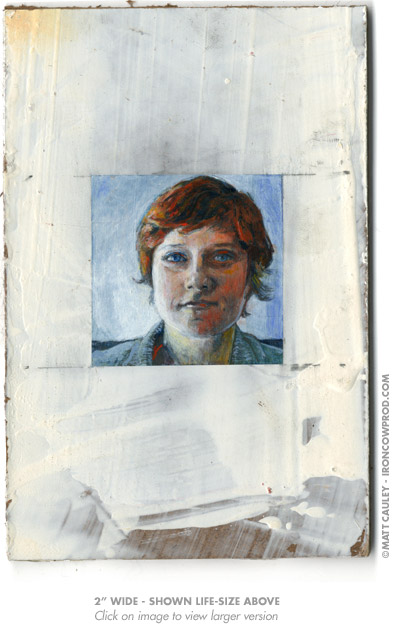Portrait miniatures began to flourish in 16th century Europe and the art was practiced during the 17th century and 18th century. They were especially valuable in introducing people to each other over distances; a nobleman proposing the marriage of his daughter might send a courier with her portrait to visit potential suitors. Soldiers and sailors might carry miniatures of their loved ones while traveling, or a wife might keep one of her husband while he was away. – Wikipedia
Though miniature painting declined in popularity due to the rise in photography, it is still a fantastic exercise for artists to attempt a portrait on a small scale. Given such a small working area, you really focus in on what color and brush marks are truly needed to maintain a lively painting despite relatively constricted movements of the brush.
While taking John Parks’ Portraiture class at the School of Visual Arts, artists went through the Miniature Portrait exercise, creating a portrait 2 inches by 2 inches square. At first, I was a bit reluctant, as I preferred working on a much larger scale. I’m glad I stuck with the project, though, as it was a fun approach to painting. The biggest surprise for me was how sculptural and expressive the paint surface appears when blown up to a large scale. I didn’t expect the surface to be so lively, and it is a characteristic I would love to maintain on my full-scale pieces.
Carrie 2×2
Acrylic on board
2 x 2 inches
Painted 2007 by Matt Cauley

